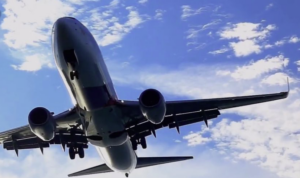Feb 21, 2024

In a year marked by economic challenges, the sector has shown steady growth, as revealed by data from the “Brazilian Aviation Insight 2023” report by the Latin American and Caribbean Air Transport Association – ALTA. According to the figures, despite obstacles such as high operating costs resulting from aviation kerosene (QAV) and the judicialization of the system, the sector continues to demonstrate resilience. The international travel segment was one of the highlights, with an increase of 37% compared to 2022.
The largest aviation market in Latin America and the Caribbean (LAC), in terms of Seats Per Kilometer (ASK), is Brazil, accounting for 26.3% of the region’s total capacity. Mexico occupies the second position, corresponding to 25.3% of the total. The total volume of passengers registered an increase of 14.7%, reaching the mark of 115.5 million, compared to the previous year. For ALTA’s CEO, José Ricardo Botelho, in the midst of a challenging global and regional environment, Brazilian aviation seeks to recover from the pandemic period, when it played a fundamental role, even without any financial help. “Brazil is LAC’s largest market and the report highlights the importance of connectivity to drive sustainable growth in the country. We will continue our commitment to support the industry on its journey to bring even more opportunities for people to use this safe and essential mode of transport.”
With regardto international connections, the busiest route was between São Paulo (GRU) and Santiago (SCL), reaching an occupancy rate of 82%. It is worth noting that less than half of the international routes were direct, reinforcing the importance of Guarulhos Airport (GRU) as the main hub for these connections.
Aviation in Brazil also showed consistency from 2009 to 2023, with a Compound Annual Growth Rate (CAGR) of 3.38% for domestic flights and 3.75% for international flights. Botelho points out that a healthy airline industry is an essential engine for progress. “Even in the face of difficulties, aviation plays a crucial role for Brazilian tourism, contributing to the 7.8% of GDP that this sector represents. In addition, their important social role can be exemplified by the free transportation of organs, staff, and materials. We need to work together, government, production chain and companies to overcome the obstacles, ensuring that Brazil flies higher and higher.”
Traffic on domestic routes reached approximately 91 million passengers, indicating a significant increase compared to approximately 57 million in 2009. The route between São Paulo (CGH) and Rio de Janeiro (SDU) led this market, registering the highest demand and a solid load factor of 62%.
The São Paulo (CGH) – Fortaleza (FOR) route showed the largest reduction in Brazil in terms of seat capacity and passenger traffic, with more than 222 thousand seats removed and a decrease of 160 thousand travelers compared to 2022.
Thedata presented reflect the importance of the aviation sector for the country. The industry is committed and has been working with government agencies in the search for sustainable solutions, aiming to ensure even more promising prospects for the future. The connectivity provided by aviation not only drives tourism and economic growth, but also plays a key social role, evidencing its positive impact on society. As we move forward, it is necessary that we continue to work together to overcome the challenges and ensure that Brazil reaches new heights of excellence in aviation, benefiting both the economy and the well-being of citizens.
The post ALTA highlights growth in Brazilian aviation amid economic challenges appeared first on AIR CARGO WEEK.
Go to Source
Author: Edward Hardy




